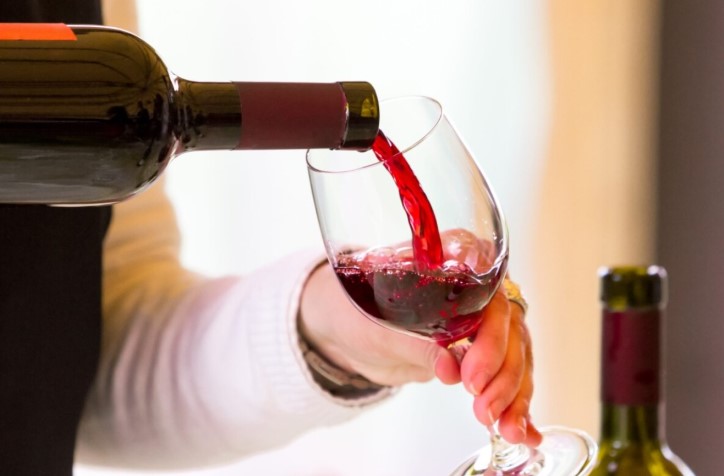
The map captures something about the spirit of the book, which is not just a celebration of Cure, one of the country’s best cocktail bars — a perennial James Beard nominee that won for Best Bar Program in 2018 — but a celebration of its community and city. Any number of books teach readers about cocktails through the lens of the bar they’re representing and recipes for drinks its mixologists have created. Far fewer also amplify their city and their neighbors (and nominal competitors) so generously.
Bodenheimer almost had to be hogtied and dragged into writing it.
To be fair, it’s not like the man doesn’t have a few other projects on his hands. Along with Cure, which he opened in 2009 after moving back to his native Louisiana after Hurricane Katrina, Bodenheimer owns Cane & Table in the French Quarter, and over the course of the pandemic, while he was writing, he opened Dauphine’s (a New Orleans-inspired restaurant in Washington, D.C.), as well as Val’s (a taqueria and agave spirits bar in the same neighborhood as Cure) and Peychaud’s (a cocktail bar in the courtyard of a French Quarter building that was once home to Antoine Peychaud, the inventor of the red bitters that now give a licorice-y hit to countless cocktails). And he also serves as a partner in Tales of the Cocktail, the annual bar conference that attracts thousands of industry folks and dedicated tipplers to the city every summer.
“Which all makes it sound like I’m … insane … but it wasn’t meant to be that way,” Bodenheimer says, noting how the pandemic played hell with so many plans and threw off so much original project timing. But he knew he’d never get the book done without help, and Timberlake, a longtime food writer and editor based in Oakland, Calif., proved to be the perfect partner in the project. Their calls and planning sessions for the book helped keep him sane during the pandemic, when so much seemed to be coming apart.
Bodenheimer knew he “didn’t want to do another bar-bar book, because so many bars have made bar books that I think it’s a pretty complete genre. And I didn’t want to do a vanity project either … . I want to talk about what Cure is and what it’s done, but I want to put it into the larger context of New Orleans drinking.”
Thus the book provides plenty of drinks that are original to Cure and the many creative mixologists who have worked there over the years, but it also provides the history of many New Orleans classic cocktails, and recipes for iterations of and riffs on such drinks as the French 75 and the Pimm’s Cup, not originally New Orleans drinks but which, through specific bars (Arnaud’s and the Napoleon House, respectively) have become indelibly associated with the city.
Exploring the historical component of New Orleans drinking required some wrestling with the ghost of Stanley Clisby Arthur, the journalist whose 1937 book, “Famous New Orleans Drinks And How to Mix ’Em” inspired the subtitle of the Cure book.
The Clisby Arthur book helped establish an early history of cocktails and of New Orleans’ place in it. The problem with the history it established is that a lot of it is what Bodenheimer describes with an expletive meaning bovine excreta.
In the intro to his book, for example, Clisby Arthur writes of New Orleans, “It was here that your most modern of American beverages, the cocktail, first came into being and was given its jaunty name,” going on to harrumph about a number of fake stories about how the word “cocktail” came into being, before then insisting that Antoine Peychaud himself was responsible for the name via a bastardization of the French word “coquetier,” which referred to a style of egg cup in which the apothecary once served doses of brandy enhanced with his stomach-settling bitters.
Unfortunately, the word “cocktail” is now known to have appeared in print when Peychaud was still in nappies.
And yet in Clisby Arthur’s book also appear such drinks as the Sazerac — the quintessential New Orleans cocktail, and the city’s official one since 2008 — the Vieux Carré, the Cocktail a la Louisiane, the Ramos Gin Fizz, the Roffignac (see recipe below), and multiple absinthe-focused drinks. (The spirit, which was illegal in the United States for nearly a century, largely due to misconceptions of its purported herbal dangers, has had a deep impact on the city’s cocktails and drink style.)
“We used ‘Famous New Orleans Drinks, and How To Mix ’Em’ as a guide when we were opening Dauphine’s,” Bodenheimer says, and that meant he ended up spending a lot of time with the book. “So I have this deep appreciation for him, because he really created this canon of New Orleans drinks. … Without him, I don’t think New Orleans would hold that important place in world drinking. At the same time, I look at some of his history, and I’m like, ‘Man, you were really winging it.’ But that’s also kind of perfect, because that is like the bar world, too. There are a lot of people who are faking it till they make it.”
Happily the Cure team spent plenty of time refining and rejiggering recipes — the book’s precise spec for the Sazerac provides the preferred amount of Peychaud’s down to the very drop — and developing their own terrific drinks. In that development process, Bodenheimer says, Cure has long followed a very specific hierarchy of considerations: “How does it taste? How does it taste? How does it taste? How does it smell? How does it look?”
That is not necessarily a recipe for success in an Instagram-driven world, he acknowledges, but over time, it seems to have worked for the bar. “With Cure, there was our desire to do what we wanted to do, and then there was what New Orleans had always done” with cocktails and their preservation, he says. “Together it kind of created this magic, where people wanted to take the journey with us and see where we were going to go.”
Scale and get a printer-friendly, desktop version of the recipe here.
This upgrade on an old New Orleans drink makes for a more balanced take on what was originally a very sweet drink. The old recipe in Stanley Clisby Arthur’s classic cocktail book called for whiskey, but this version from the bar Cure’s new cocktail book uses Darroze 8 Year Les Grands Assemblages Bas-Armagnac, a French grape brandy, for the base. Co-author Neal Bodenheimer notes that the recipe works “surprisingly well with any number of unaged spirits,” but doesn’t like it with the original whiskey. The raspberry shrub can be refrigerated for several months and can be added to sparkling water, lemonade or other drinks.
Storage: Refrigerate the shrub for up to 3 months.
- 1/2 cup fresh raspberries
- 1/2 cup cold water
- 1/2 cup granulated sugar
- 1/2 cup white vinegar
- Ice
- 1 1/2 ounces bas-armagnac (or your preferred spirit; see headnote)
- 1 ounce raspberry shrub
- 2 to 3 ounces soda water, to top
- Fresh raspberries, for garnish (optional)
- Mint sprig, for garnish (optional)
Make the shrub: In a blender, combine the raspberries, water, sugar and vinegar and process on high until smooth. Strain through a fine-mesh sieve or cheesecloth, transfer to a bottle and refrigerate until needed. You should get about 1 1/4 cups (enough for about 12 drinks).
Make the drink: Fill a Collins, large coupe or a stemmed punch glass with ice.
Fill a cocktail shaker with ice, then add the armagnac and raspberry shrub. Shake to chill, about 15 seconds, then strain into the glass and top with the soda water. Garnish with the raspberries and a mint sprig, if you like, and serve.
Adapted from “Cure: New Orleans Drinks and How to Mix ‘Em,” by Neal Bodenheimer and Emily Timberlake (Abrams, 2022)
Tested by M. Carrie Allan.






